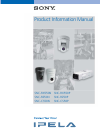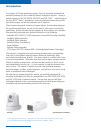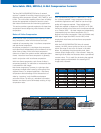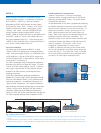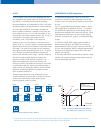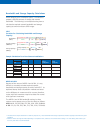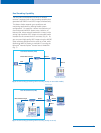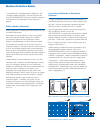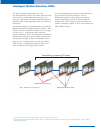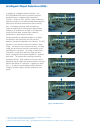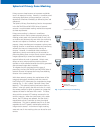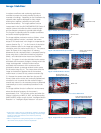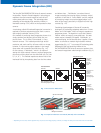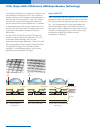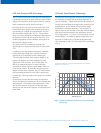
3
Selectable JPEG, MPEG-4, H.264 Compression Formats
The Sony SNC-RX550/RZ50/CS50 Series of network
cameras is capable of encoding images using any of the
following three compression formats: JPEG, MPEG-4, and
H.264. This multi-codec capability allows users to flexibly
choose the appropriate compression format to match
their network environment and monitoring applications.
This section provides a general explanation of these three
compression formats beginning with the basics of video
compression.
Basics of Video Compression
Most practical video compression techniques are based on
lossy compression, under which there are two basic
methods of compressing video: intra-frame compression
and inter-frame compression.
Intra-frame compression is a technique that compresses
each video frame independently without reference to any
other frame of video, while inter-frame compression
makes use of data from previous and/or subsequent video
frames. Note that inter-frame compression is generally
used in conjunction with intra-frame compression.
With intra-frame compression, each frame of video is
compressed spatially (i.e. redundant or nonessential data
is removed from the image).
Inter-frame compression, however, is a technique that
compresses multiple video frames by utilizing data from
adjacent frames (i.e. temporal prediction). Inter-frame
compression takes advantage of the characteristics of
video by “capturing” only the difference between
successive frames. By doing so, redundant information
between two frames can be eliminated, resulting in high
compression ratios.
JPEG
JPEG (standardized by ISO/IEC IS 10918-1/ITU-T T.81) is
the “industry-standard” image compression format for
surveillance applications and is ideal for use when high-
quality still images are required. These individual still
images are captured in sequence of 30 (NTSC) or 25 (PAL)
frames per second to form video and is sometimes referred
to as “Motion JPEG.” All these images are independently
compressed using intra-frame compression (Fig. 1).
Because intra-frame compression is the only method used,
JPEG data is larger than MPEG-4 and H.264, which
employ both intra-frame and inter-frame compression
techniques.
With the SNC-RX550/RZ50/CS50 Series of network
cameras, the JPEG picture quality can be set to a level
within the range of one to ten as shown in the table
below. By presetting the picture quality level, these
cameras output images with a “near-constant” data size,
meaning that the data size fluctuates about a pre-defined
constant value. This is useful for calculating the required
storage capacity and bandwidth for streaming JPEG
images over a network.
Approximate Data Size [Resolution (pixels)]
Compression
Level
VGA (640 x 480) QVGA (320 x 240) QQVGA (160 x 120)
Ratio
(approx.)
10 150 KB 45 KB 11.25 KB 1/6
9 90 KB 22.5 KB 5.625 KB 1/10
8 60 KB 15 KB 3.75 KB 1/15
7 45 KB 11.25 KB 2.8125 KB 1/20
6 36 KB 9 KB 2.25 KB 1/25
5 30 KB 7.5 KB 1.875 KB 1/30
4 25.7 KB 6.43 KB 1.607 KB 1/35
3 22.5 KB 5.625 KB 1.406 KB 1/40
2 18 KB 4.5 KB 1.125 KB 1/50
1 15 KB 3.75 KB 0.9375 KB 1/60
Fig. 1 “Motion JPEG” Structure
3 frames
At 30 fps, 1 sec = 30 images



